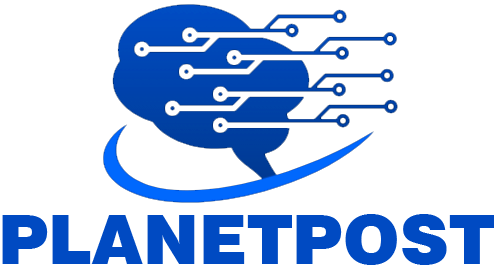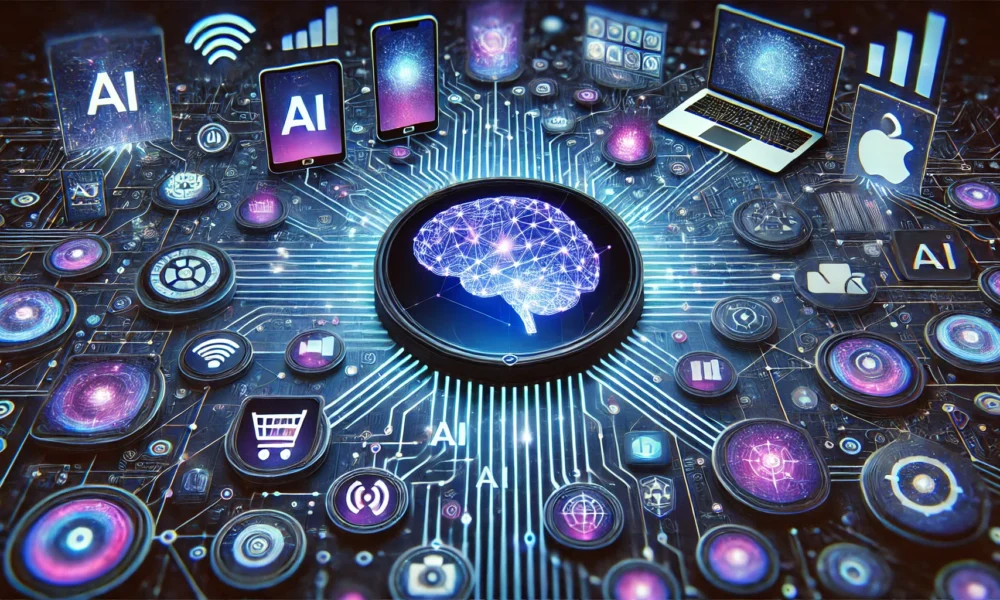AI still feels like a cutting-edge breakthrough, even though it’s been around for decades.
Machine learning has quietly powered search engines, recommendation algorithms, and speech recognition for years – but only recently has AI become a consumer product in its own right.
Since generative AI as a sub-category of AI ‘went mainstream’ in 2022, ChatGPT set records as the fastest-growing app of all time. Gen AI user adoption is rocketing, with one in three adults and four in five teenagers now using it daily.
However, despite generative AI becoming relatively normalized within just two to three years, it still recalls the early days of the internet or mobile apps: powerful, exciting, but not yet fully integrated into daily life.
It’s a familiar cycle. The first wave of the internet was about making it work conceptually and practically. The real transformation came later when companies built on that foundation to create frictionless, indispensable services.
Is AI following a similar path? If so, what forms of consumer AI can we expect to see as the technology matures?
AI is here – but it’s still finding its feet
AI is advancing fast, but mostly still revolves around the efforts of a few major players. Big Tech – Microsoft, Google, Apple, Amazon, and Meta – have poured billions into research, while NVIDIA, the backbone of AI hardware, has nearly quadrupled its market cap in two years.
Investment has been concentrated on building ever-larger foundation models – driven as much by competition as by the need to justify staggering development costs.
Off the back of this, the first wave of B2C AI applications has focused on delivering immediate value by taking over repetitive tasks, such as meeting organization and scheduling, which previously consumed significant user time. While these tools simplify workflows and generate high-quality media across different formats, they often still require substantial user input.
In many cases, getting AI to produce great results still takes effort. And that’s a barrier to mainstream adoption. Essential technology doesn’t demand mastery from the user. No one had to learn how to optimize routes for Uber or navigate Google Maps manually.
AI isn’t there yet, but that’s where it’s heading. The new wave of B2C AI tools will be all the more instinctive, responsive, and woven into daily life – incredibly intelligent, easy to use, and anticipatory without effort.
The new era of consumer AI
The next generation of AI won’t just be a tool we directly interact with – it will be an intelligence layer embedded into our digital (and physical) lives.
Let’s take a look at where consumer AI technology is heading right now and its future potential.
Agents and personal computing
AI has proven itself capable of fantastic results, but the results still depend heavily on the user’s input. Extracting high-quality, consistent results from many AI tools today often requires skill, experimentation, and technical knowledge. It places a burden on the user, naturally capturing the tech-savvy rather than a wider user base.
The next generation of B2C AI will remove that filter, becoming more intuitive, adaptive, and agentic – refining behavior and managing complex tasks without constant oversight.
With this, AI is moving closer to something that “just works,” much like Uber, Google Maps, or TikTok, which require little expertise yet deliver seamless experiences.
The next logical step? AI systems that don’t just generate responses but act on behalf of the user.
OpenAI’s Operator, Claude Computer Use, and Google’s Jarvis demonstrate early progress in AI that executes multi-step tasks independently. Right now, AI can help you complete a task in 20 minutes instead of an hour – but you still need to be present to oversee and execute the process. With agentic AI, you might not need to attend your PC at all.
This will lead to AI that anticipates, automates, and orchestrates workflows across apps and services. This manifests across a huge variety of products:
- AI-powered financial automation – Imagine a finance app that automates savings, adjusts budgets dynamically, and ensures bills are paid at the optimal time. Instead of manually moving money around, users could set general goals, and AI would handle the rest.
- AI-driven shopping and logistics – Envision an AI assistant that notices when household essentials are running low and orders refills at the best price, without constant input. Any retail product returns and replacements could be processed just as easily, with AI handling back-and-forth, providing a label and drop-off location.
- AI to manage time and productivity – A scheduling tool that doesn’t just set reminders, but actively reshuffles plans based on real-time priorities, energy levels, and personal habits. It could suggest when to focus, when to take a break, and even when to reschedule less urgent tasks.
- Consumer-facing automation – AI that links everyday services together, automatically adjusting grocery deliveries based on meal plans, syncing smart home settings with routines, or coordinating transportation based on real-time data.
We can already build some of these applications today, but they require complex setup and manual configuration. For example, automation services like If This Then That (IFTTT) can be used to link multiple platforms.
That’s what will change. Instead of requiring users to learn automation, AI will handle the setup itself. You’ll simply describe what you need in plain language, and AI will take care of the rest.
Multimodal, multi-platform apps for creativity and entertainment
Think about how naturally we switch between speaking, gesturing, writing, and drawing when sharing ideas. Creativity isn’t confined to a single medium, yet most digital tools still are.
The next wave of AI will change that, making it possible to express ideas across text, visuals, sound, and interactive experiences – blurring the boundaries between different forms of creation.
Starting with language models like GPT, the gen AI ecosystem now includes tools for images (MidJourney, DALL-E), audio (Suno, Udio), and video (Runway). The next step is merging these modalities into unified, intuitive platforms where storytelling, design, and content creation become as fluid as imagination itself.
Simultaneously, Meta’s Quest and Orion, and the Apple Vision Pro are blending the physical and digital world alongside AI, paving the way for immersive applications like augmented reality (AR) environments for home and work, immersive entertainment environments that adapt to real-time inputs, and virtual classrooms that simulate hands-on experiments.
This all points to apps that work more like we do:
- AI-powered filmmaking and animation – Describe a scene in text or verbally or sketch an idea visually, and AI generates the rest, from storyboards to final renders.
- Game creation without coding – Build interactive worlds using voice commands, text prompts, or visual reference without game engine expertise.
- Music and sound design from any input – Hum a tune, describe a vibe, or explain your ideas via text – AI generates a full composition.
- 3D content and AR creation made seamless – Generate characters, environments, and effects through voice, gesture, or sketches.
Instead of forcing everyone to create the same way, technology will truly adapt to different styles of thinking and communicating while bridging the physical and virtual worlds. AI tools won’t ‘specialize’ in different modalities but switch between them seamlessly – redefining entertainment in all forms.
AI for health, accessibility, and empowerment
For years, technology has been built around rigid interfaces – structured apps, manual inputs, and systems that expect users to adapt to them.
AI is flipping the script by personalizing to individual needs, making health, wellness, and decision-making more accessible and intuitive for everyone.
This could take a number of forms:
- Proactive health coaching – AI-driven wellness tools that don’t just track habits but actively adjust recommendations. Fitness plans that adapt in real-time based on energy levels, environments that fine-tune conditions for better sleep, and stress management systems that recognize early signs of burnout.
- Simplified access to care – AI that helps bridge the gap in healthcare by providing real-time language translation, assistive diagnostics, and personalized health insights that make medical information more understandable. Instead of context-switching between complex systems, users will receive straightforward, personalized guidance based on their needs.
- Bespoke education for every learner – AI-powered tutoring that adapts to a student’s pace and learning style, helping those with ADHD, dyslexia, or other learning challenges access content in ways that work best for them. Instead of rigid lesson plans, AI can create personalized learning environments, breaking down complex subjects in the preferred medium.
Interconnectivity will be key here. Instead of context-switching between multiple apps, wearables, and dashboards, users will interact with one fluid intelligence layer that works across different domains.
The future: AI that works for us
While current AI systems are already incredibly impressive, they also lay the groundwork for the technology’s future trajectory. That presents a tantalizing future. As AI moves onto our devices and infrastructure matures, we’ll see an explosion of creativity and innovation.
Innovation won’t just emerge from Silicon Valley. It will come from hospitals and schools, studios and workshops, from people solving real problems in their fields. AI won’t just enhance productivity – it will expand humanity’s potential.
- People will have more time for creativity and self-expression – As AI handles routine tasks and lowers skill barriers, more people will be free to create, experiment, and bring ideas to life.
- Health and well-being will improve – AI-driven personalization will help people stay healthier, manage stress, and access expert guidance in real time.
- Technology will become more inclusive – AI will adapt to individuals, not the other way around, making tools accessible regardless of language, ability, or expertise.
- A culture of creation will replace passive consumption – High-quality storytelling, game design, music production, and visual art will no longer be limited to those with years of training or expensive tools.
This isn’t just about better technology. It’s about AI becoming as diverse as the human experience itself. Some tools will focus on accessibility, others on creativity, many on challenges we haven’t even identified yet.
The future of AI isn’t about bigger models or better chatbots – it’s about making creation, innovation, and opportunity accessible to all. And that future looks a lot more interesting than anything we can imagine from where we sit today.


